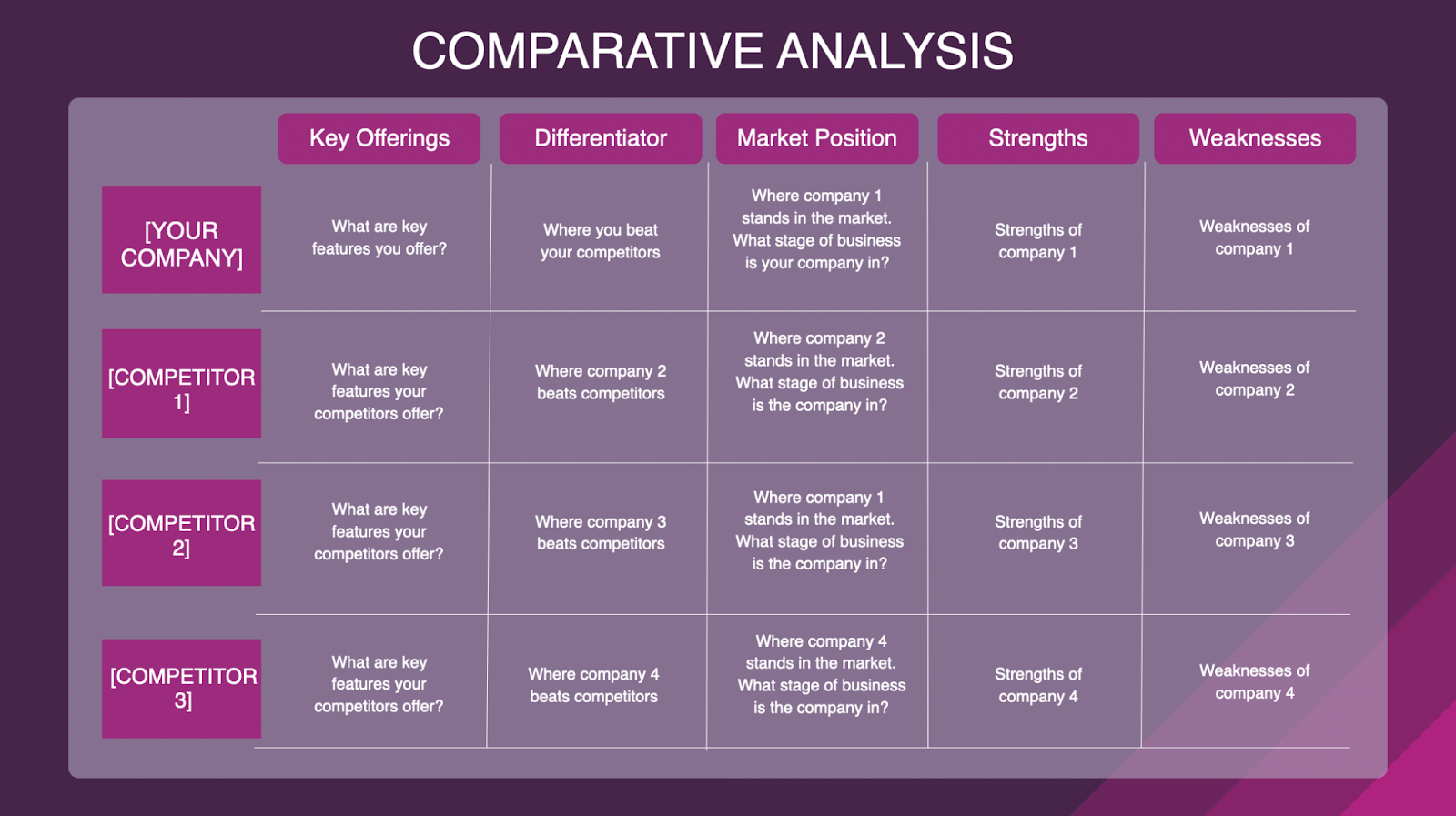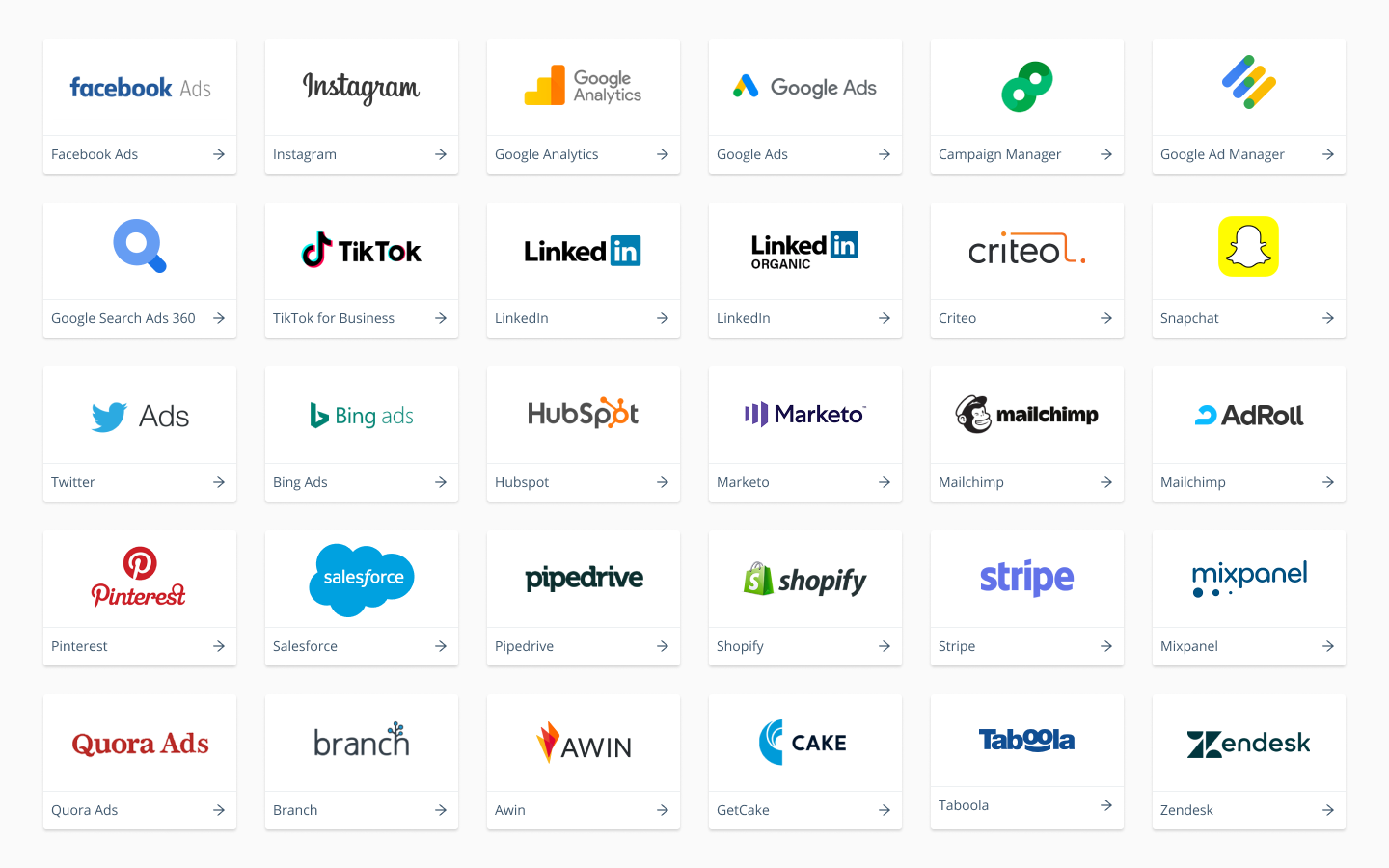Marketing managers build brands, generate demand, promote sales, and help organizations secure customer loyalty in vast and diverse marketing conditions, with many complex and dynamic variables. Today's marketing strategies must coordinate a team's ability and resources with stakeholder expectations, customer satisfaction, and increasingly, other ethical and compounding environmental concerns.
This multiplex landscape demands scientific decision-making that leverages comprehensive, definitive, and end-to-end knowledge when it comes to company operations and audience engagement. To this end, martech solutions provide valuable data sets that can be leveraged to produce positive customer responses.
However, a marketing manager must first understand target customers' needs. This is where gathering the correct data can help make better decisions that result in marketing efficiency in terms of pricing strategy, marketing policy, and the development of achievable KPIs.
Types of Data Used in a Marketing Mix
Effective marketing plans positively influence the marketing mix, i.e., product, placement, price, and promotion. When marketing management uses data to direct strategies within components that comprise the marketing mix, they create a visible, in-demand product or service comparatively priced and promoted on selective distribution channels.
While analytics provides extensive data, which affects key marketing decisions, it can be challenging to discern which data is most important. Below are critical areas where data gathering and analysis are key to making important marketing decisions related to business organization success.
Sales Data
This data includes measurable metrics derived from the sales process that reveals how and why products or services sell. Sales growth, annual recurring revenue, churn rate, net revenue, retention rate, and average profit margin are some metrics that fall into this mix.
This data equips marketing management to implement substantial positive changes to sales processes and pipelines, such as improving sale forecasting, identifying bottlenecks, and building better relationships with new leads and existing consumers.
🚀Build a comprehensive dashboard for your revenue data with our list of 34 best revenue charts.🚀
Customer Data
Marketers need to know who buys their products and services. Understanding this data improves target market segmentation and allows businesses to meet target market expectations with strategic content marketing strategies that drive leads down the buyer's funnel.
There are a range of customer data platforms (CDPs) and customer relationships management (CRMs) systems available to help unify first-party data from multiple sources into a complete view of each customer, as well as manage customer relationships. Bloomreach, Insider, Oracle, Salesforce and HubSpot are widely used by the marketing industry to strategically leverage data for business growth.
The more you know about the kinds of products and services a target market is interested in, the more likely you will pitch what they're inclined to buy. Customer data can be divided into four groups:
- Descriptive data. Demographics such as contact details, age, profession, income, and location, for example.
- Behavioral data. The general patterns customers exhibit when using products and services such as website browsing, device usage, and preferred purchase times.
- Interactive data. Which distribution channels they are more likely to use, how do they interact with different advertising tactics, etc.
- Attitudinal data. Preference data, usually captured in focus groups, such as what branding customers gravitate towards, what they think about a company's products and services, as well as its perceived value.
Competitor Analysis
By evaluating your competitors to understand their strengths and weakness, you can identify gaps in the market and improve your value proposition and business strategy.
According to Big Commerce, a competitor analysis is an effective strategy that helps identify the main market players and determine what strategies they use and the resources a company can leverage to dominate the market.
Competitor analysis provides a benchmark for company growth and identifies the type of marketing strategies required to produce positive customer responses. For instance, the customer may want to see humorous advertisements or prefer video rather than blog content.
You can use this comparative analysis template that will help you assess your strengths and weaknesses.
Market Research
Not to be confused with competitor analysis, market research reveals the position and feasibility of a company within the market and business landscape. Its primary purpose is to understand or examine the marketing environment associated with a product or service.
Market research can help achieve administrative, social, and economic goals, including the refinement of marketing objectives, public relations, promotion decisions, and product line development. Four common types of market research techniques include surveys, interviews, focus groups, and customer observation.
Product Data
While connected to sales data, it's important to remember that not all product data is derived from sales. Product data helps businesses cultivate brand affinity and increases the lifetime value of a consumer, driving acquisition, sales, and positive customer response.
KPIs and metrics will vary from company to company. However, product analytics should, on the whole, track and analyze real-time engagement and behavioral data, so organizations can optimize the customer journey with the right promotional strategy and content distribution channel.
One of the most important metrics to follow is the product adoption rate. It’s the key indicator for measuring the performance of new products, features, and updates.
5 Crucial Data Ingredients That Affect Marketing Decisions
It's facile to declare leveraging data grows revenue. Of course, actionable insights increases leads and conversions. However, this is simply because an organization privy to the right consumer data will market products and services accurately and thus yield beneficial results.
A correctly leveraged data offers a long-term marketing strategy to gain feasible results, provided organizations pivot accordingly.
According to Google,
"Leading marketers are 56% more likely to agree that decisions backed by data are superior to those based on gut instinct and experience."
Using data to make marketing decisions together with the implementation of proprietary infrastructure can deliver unbridled success.
Sales Data Ingredient: Leveraging Sales Data to Make Marketing Decisions
When sales teams use data correctly, they only pursue promising leads. Analytics tools offer insights, such as where a prospect comes from, why a sales rep reached out to them, and how they made contact, which can aid the further development of buyer personas.
For example, American multichannel video programming company DirectTV discovered 60% of people switched service providers only when they moved home, and were otherwise reluctant to engage with their product. They used this data to specifically target new homeowners with customized offers, which outperformed their standard sales pitch.
From leads prospecting to churn reduction and pricing, data quantifies actions that differentiate top sales reps from the less productive, which helps marketing managers identify which skills need upgrading. Moreover, it can be used to develop key performance indicators for individual team members and personalize marketing sales pitches to warm leads.
Product Data Ingredient: Leveraging Product Data to Make Marketing Decisions
Product data covers the entire product lifecycle and related processes, including customer feedback and requirements. Another recent example of a company implementing data to make marketing decisions is McDonald's. After a customer-led campaign requesting the chain to stop the use of plastic straws went viral, McDonald's announced they'd switch to paper ones.
This bodes well for the current climate, where consumers demand and expect corporations to exhibit greater sustainability. McDonald's managed to make a better business decision by using product data effectively and has subsequently rolled out its Change a Little marketing campaign espousing how it plans to be more eco-friendly.
Customer Data Ingredient: Leveraging Customer Data to Make Marketing Decisions
Today's customers are overwhelmed by 'tyranny of choice.' Getting their attention requires the development of personalized marketing experiences that appeal directly to their interests. Consequently, these personalized experiences make customers feel valued, which ultimately increases conversions and sales.
As it is, 75% of consumers prefer retailers to use personal data to improve their shopping experiences. For instance, a company may be able to identify that the customer is a trail runner through agreements with a third-party data provider. When the person arrives on their website, the marketer can feature popular products related to trail running.
That’s where product recommendation engines come into play. Data scientists aggregate all personalized marketing data gathered about clients to deliver the content that will resonate with prospects from different niches, backgrounds, and experiences.
Companies that strive for personalization use marketing ETL solutions to gather marketing data in a unified data warehouse. For example, Improvado merges insights form 300+ marketing and sales data sources. With all data in a single storage, it becomes much easier to set up the recommendation pipeline.
Besides, the platform also assists in lead attribution and tracking users’ contacts with product recommendations across all social media, email marketing tools, eCommerce platforms, and more.
Market Research Ingredient: Leveraging Market Research to Make Marketing Decisions
Starbucks, Apple, McDonald's, and Lego leverage market search to inform their marketing campaign strategies. Recently, Lego conducted consumer research into how society genders toys, only to discover its marketing needed to rebuild perceptions of what girls and boys play with.
A thorough examination led them to launch The Ready for Girls Campaign, which demonstrates the benefit of creative play shouldn't be curtailed by outdated stereotypes whereby activities are only suitable for one specific gender. Naturally, this led to an informed marketing decision to rebrand its products with messaging suitable to current consumers.
When Lego discovered over 50% of parents would encourage their sons to build with Lego, but only 48% would encourage their daughters, they harnessed a marketing opportunity, not only to close the gap on gender parity, but also encourage more sales for young, female consumers.
Competitor Analysis Ingredient: Leveraging Competitor Analysis to Make Marketing Decisions
A competitor analysis determines whether a company is a market leader, one of several followers, or new to the marketplace. With this information, a marketing manager has to decide how to compete in their market. This is primarily done by expanding marketing into areas with little competitor presence or targeting new demographics.
Swedish clothing brand H&M’s sales in South Africa, were among the strongest in the world in 2021, despite COVID-19 lockdowns. Since launching in the country in 2015, it has established 27 stores, with turnover fast approaching sales figures of almost R1.6 billion, comparable to countries like Portugal and Malaysia.
A competitor analysis would have revealed how even though South Africa has its own fast-fashion outlets, there is a growing middle class with buying power, who are eager to purchase European fashion. H&M currently provides marginally better quality than local brands like Mr Price that appeal to a lower LSM. It also offers a greater variety of more affordable fashion than Zara, which is considered a “luxury” fast fashion in African markets. Hence, it has found success in a retail middleground that marries price with global trends.
The principal source of competitive advantage is lower production costs and a differentiated product offering. Most organizations adopt the latter by developing a marketing strategy that includes promoting them as a thought leader, market challenger, or market flanking. They displace competitors in peripheral markets by capturing underserved audience segments.
Conclusion
Digital marketing is an agile practice, ever-shifting and optimizing with the launch of new technology and changes in consumer behavior. It's never a static process, which is important to take cognizance of if a business wants to leverage the full power of data to make important decisions impacting business growth.
Research conducted by Mckinsey found organizations that use data to make marketing decisions are 23 times more likely to acquire customers, six times more likely to retain them, and 19 times more likely to be profitable. This scientific approach seizes opportunities for granular growth and achieves significantly greater resilience and ROI.
500+ data sources under one roof to drive business growth. 👇
.png)
 (1).png)
.png)

.png)










 (1).png)

.png)





.png)


.png)
.png)
